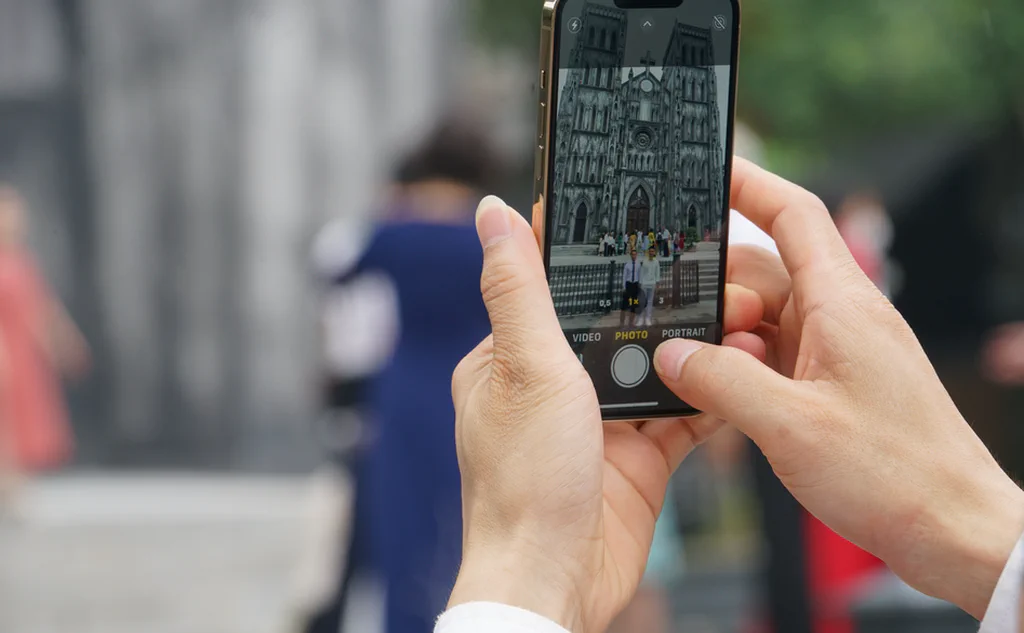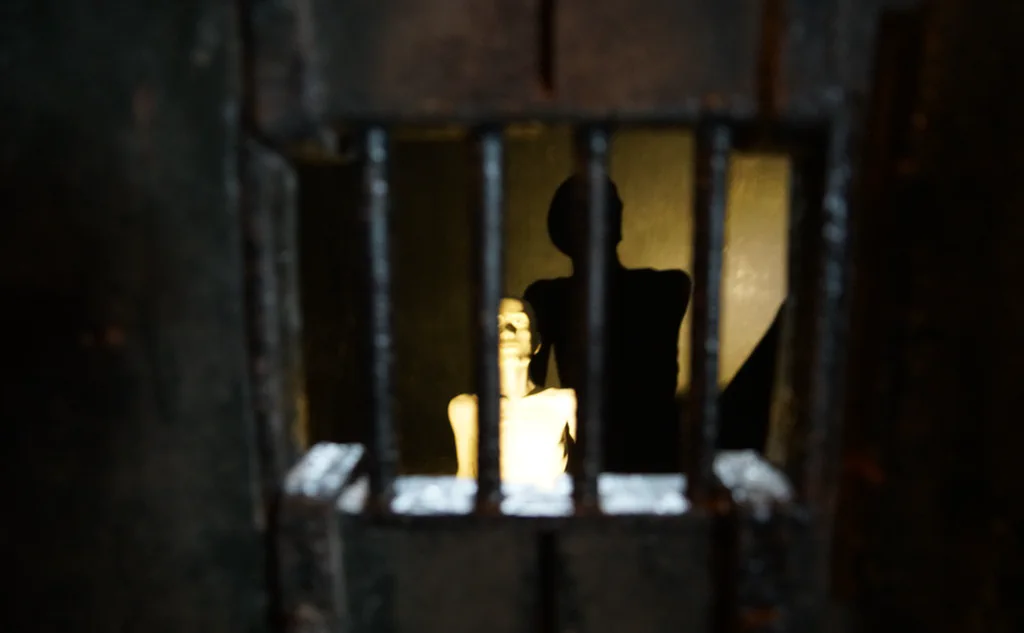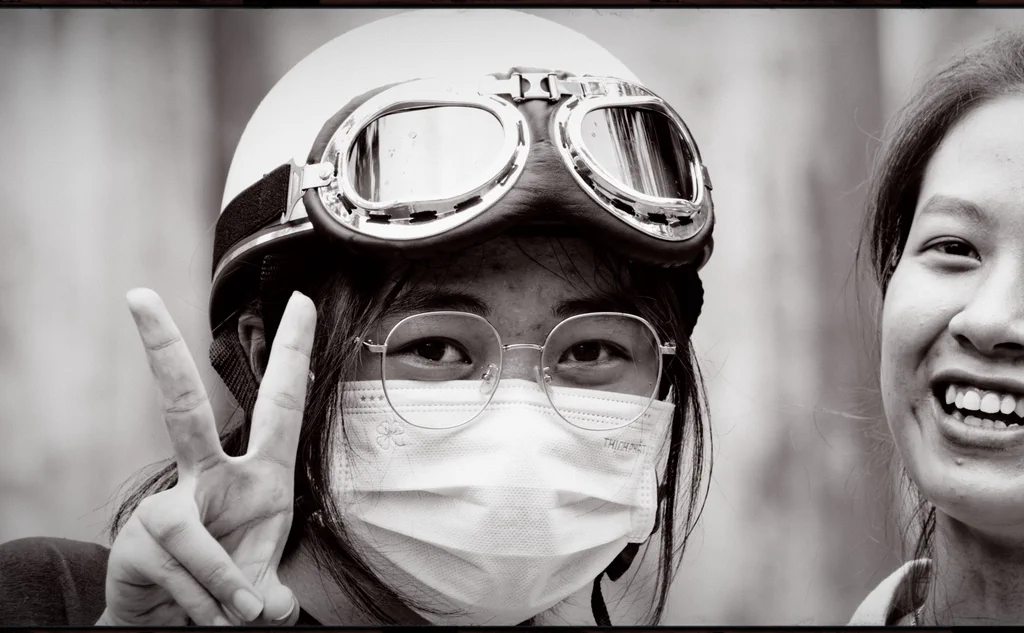Day 2 - 12th June
After a muggy night and a refreshing shower, there’s no breakfast on the cards. It seems the hotel has issues not just with the air conditioning or the faulty lift, but also with the kitchen. Luckily, directly opposite, there’s a place offering delightful traditional Vietnamese coffee.
Vietnam
Before setting off on our journey, I took the chance to watch some YouTube videos, aiming to learn at least the five essential phrases you need on any trip: “Yes”, “No”, “Please”, “Thank you”, and “Greetings, we come in peace”, or something to that effect. Vietnamese is so different from anything I know that only “cảm ơn” for “Thank you” stuck in my mind.
Another video, explaining how to safely cross a street in Vietnam, turned out to be far more relevant in hindsight. The streets of Hà Nội are frequented by cars and the odd lorry, but the bulk of the traffic is mopeds—many so old they’re relics from the Soviet era.
There’s a constant, uniform hum, especially from the roundabout outside our hotel. It resonates from all directions and fades away just as uniformly. On the main square, streams of vehicles intermingle as if each moped were a charged particle, avoiding collisions through repulsion.
The horn is the primary mode of communication here. The louder a horn sounds, the closer the respective vehicle. Mopeds produce a high-pitched, brief, but raspy noise, while cars give off the familiar tones. However, when a deep, lingering mooooooot resounds, it’s wise to wait until the associated lorry has passed before crossing the street.
Still, once you’ve stepped onto the road, it’s best to walk at a leisurely, steady pace as the “charged” moped particles weave around you. At that moment, it dawns on me: perhaps I’ll actually survive this adventure.
Confirmation Ceremony, St. Joseph Cathedral
This Sunday, many smartly dressed families are making their way to the church. Whole generations seem to be represented: parents, uncles, aunts, grandparents, and grandchildren. Amidst it all, we stand—a group of European photographers. I raise my camera, focusing on a family entering the church. Their attire is vibrant, a splendid spectrum of colours. To my astonishment, some even beam when they spot me, giving a wave before posing for a picture. Their joy at being captured is infectious.
Later, Nicolas offers me some advice. “Look for the stories, not just the photos,” he says with a stern gaze.
“Hanoi Hilton” Prison
Our next stop in Hà Nội is the Hỏa Lò Prison—ironically named the “Hanoi Hilton”—a grim reminder of the fraught history between Vietnam and the USA. The oppressive aura of the place gives me the shivers as we step onto the premises.
Originally built in the late 1800s by the French to imprison and torture Vietnamese freedom fighters, it eventually became a holding place for US POWs during the Vietnam War.
Inside, we’re presented with various exhibits depicting the unimaginable conditions and atrocities endured by the inmates. One exhibit that particularly strikes me is a chilling guillotine—a stark symbol of brutal French colonial rule.
Another display reveals the tiny prison cells, with inmates crammed inside. It’s hard to imagine the number of people who were shackled by one foot in these tight spaces, with no room to move and barely any air to breathe.
Despite the heavy atmosphere permeating the “Hanoi Hilton”, we notice a remarkable shift in the portrayal of the American POWs. Instead of being depicted solely as enemies, newer displays tend to see them more as victims of the war, reflecting the evolving Vietnamese attitude towards the Americans.
Because of its dark past, this prison now stands as a symbol of the Vietnamese people’s resilience and perseverance. And it serves as a poignant reminder that peace and understanding are worth infinitely more than any confrontation or conflict.
Selecting the Photos
Evening falls in Hà Nội. The air is thick with the aromatic scent of Pho stalls and the smoky sweetness of street barbecues. I’m a bit anxious as I present my chosen ten photos to the group for the first time. The digital images on screen radiate a sharpness and vivacity, mirroring Hà Nội’s colourful splendour. They’re moments I’ve captured, everyday scenes unfolding in the bustling district.
Nicolas views my photos with an inscrutable expression. I can’t tell if he’s impressed or disappointed. Then, he breaks the silence. “Why are you showing us these banal images?” he critiques, his words echoing in my head. What’s new and exotic to me is everyday to him, having lived and worked here for years.
The other group members take turns showcasing their works. Each image is unique, each tells its own tale. I feel somewhat disheartened. My photos seem plain in comparison. It’s as if I’ve merely scratched the surface of Hà Nội, while the others delved much deeper.
Nicolas doesn’t offer concrete advice on improving my photography. Instead, he challenges me to capture something striking the next day. Something truly representing the essence of Hà Nội. Something beyond the clichés and familiar images. Hearing this, I feel a mix of discouragement and challenge. But I accept. I’ll hone my focus, delve deeper into the heart of this captivating city, and attempt to capture its soul.
That night, as I wander the illuminated streets of Hà Nội, I try to see the city through new eyes. I observe the people, the buildings, the bustling activities. I realise I need to find a different perspective. And with that insight, I hope to be ready for the day ahead.




